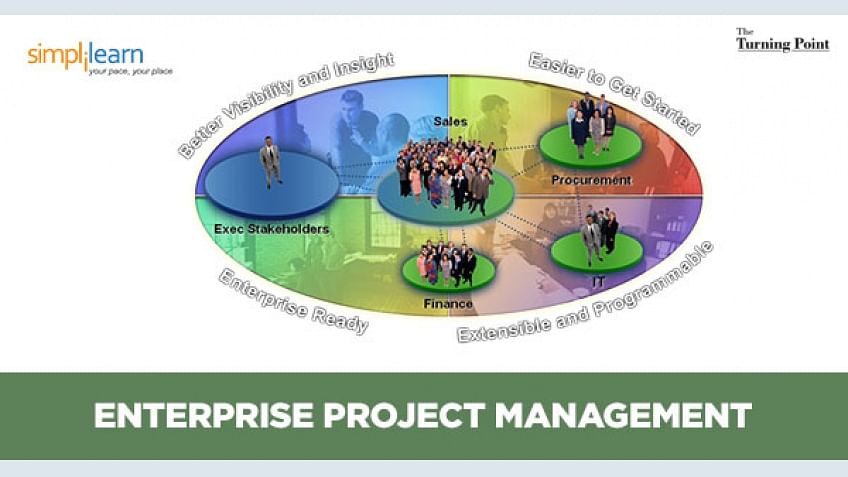Scrum is undoubtedly the best choice for managing IT projects; however, one of the major questions floating around is ‘whether is this the right choice for enterprise project management?’ Getting the staff trained in enterprise scrum might not be the best available option. However, when it comes to implementing scrum, chances are that the ideals of project managers might clash with the reality walls created by security protocols, disconnected architectures, and other parameters. Although implementing scrum in huge enterprise-level projects can bring about gains in productivity of over 400% within a short span of time, it is essential to not disturb the processes that are already making huge profits. Now let us probe deeper to understand why huge enterprises get stuck while implementing scrum.
1. Stuck with the GATES OF HELL? – Cut Them Down Wisely
Juicy corporate websites have always been the prime plum targets for black-hat hackers.Dispersed labor teams, which cut down labor costs, demand asymmetric communication and synchronized efforts amidst various time zones with the help of secure system ‘gates’. Although such gates often hinder the crawl speed, these gates can actually co-exist with relative speed. Global corporations with complex interconnected legacy cannot speed up at the rate of a startup. Some of the processes can only create huge churns without any business value. However, few of such churns can be avoided e.g.: skipping a pre-meeting phase and directly approaching customers for drafting product wish list. Performing this before commencing iterative development and other estimations can actually cut 2-3 months off from every project.
2. Did You Make a Clear Contract Agreement?
Arranging for a meeting to discuss the deliverables and freezing on the same by signing a contract is necessary to prevent ambiguity. Lack of written agreements might lead to confusions e.g.: you might think of delivering X whereas the stakeholder / client might expect you to deliver X+Y. Such haggles over requirements versus delivery are caused due to lack of communication or by failing to document the outcome of the meeting.
3. Cracking the Wall of Reality
Effective training might not be the actual reason for failure of scrum across enterprises. A proper starting point to check whether to implement scrum or not in your organization, is by asking ‘why does scrum not work for you?’ It does not stop at that, asking the right question to the right source is also important. Scrum trainers or certifiers are certainly a wrong choice to ask such questions as they are in the business of ‘filling a room’ or ‘certification’. Approaching a scrum consultant experienced in diagnosing unyielding problems and who has also worked with organizational leaders can make the right beginning. Scrum implementation requires a thorough understanding of specific leadership goals, inherent barriers within business process as well as the distinctive mix of resources, technology, budget, deadlines and several other constraints.
4. Deliver Smart, Not Stupid!
The biggest challenge faced by most of the CIOs is to prove the value that IT adds to business. This explains why most of the CIOs report to CFOs rather than directly reporting to CEO or the COO. Providing the right tools to overcome corporate handcuffs to smart professionals while implementing scrum can help them resolve shackles and kick start the work.
5. Project Execution ‘Eats Up’ Training and Coaching for Breakfast
Training processes usually charge a bomb for few days training without throwing much light on intrinsic implementation requirements that explain the nitty-gritties driving the project. Although the regulation and processes change very often, enterprises are quite slow in delivering software. Approaching consultants, who can look into the trenches within the team, identify challenges and define workable processes can be extremely helpful. Implementing this across various teams by learning from each team can serve the purpose better than addressing the problem from top.
Conclusion
Certifications and training programs can only refine our approach to obstacles, but not necessarily help us in solving them. Implementing scrum across enterprises is tricky. However, it provides a disciplined approach to manage project and prevent tampering of project priorities with the help of consistent and integrated project framework. Adapting scrum approach to project requirements can pace up the project and save billions of dollars. If you wish to take up a certification course in scrum, then Simplilearn can help you. Please click here to know more.
References:
- https://www.scrumalliance.org/community/articles/2013/2013-april/six-recommendations-for-an-enterprise-scrum-transf
- http://www.pinnaclemanagement.com/what-enterprise-project-management/70
